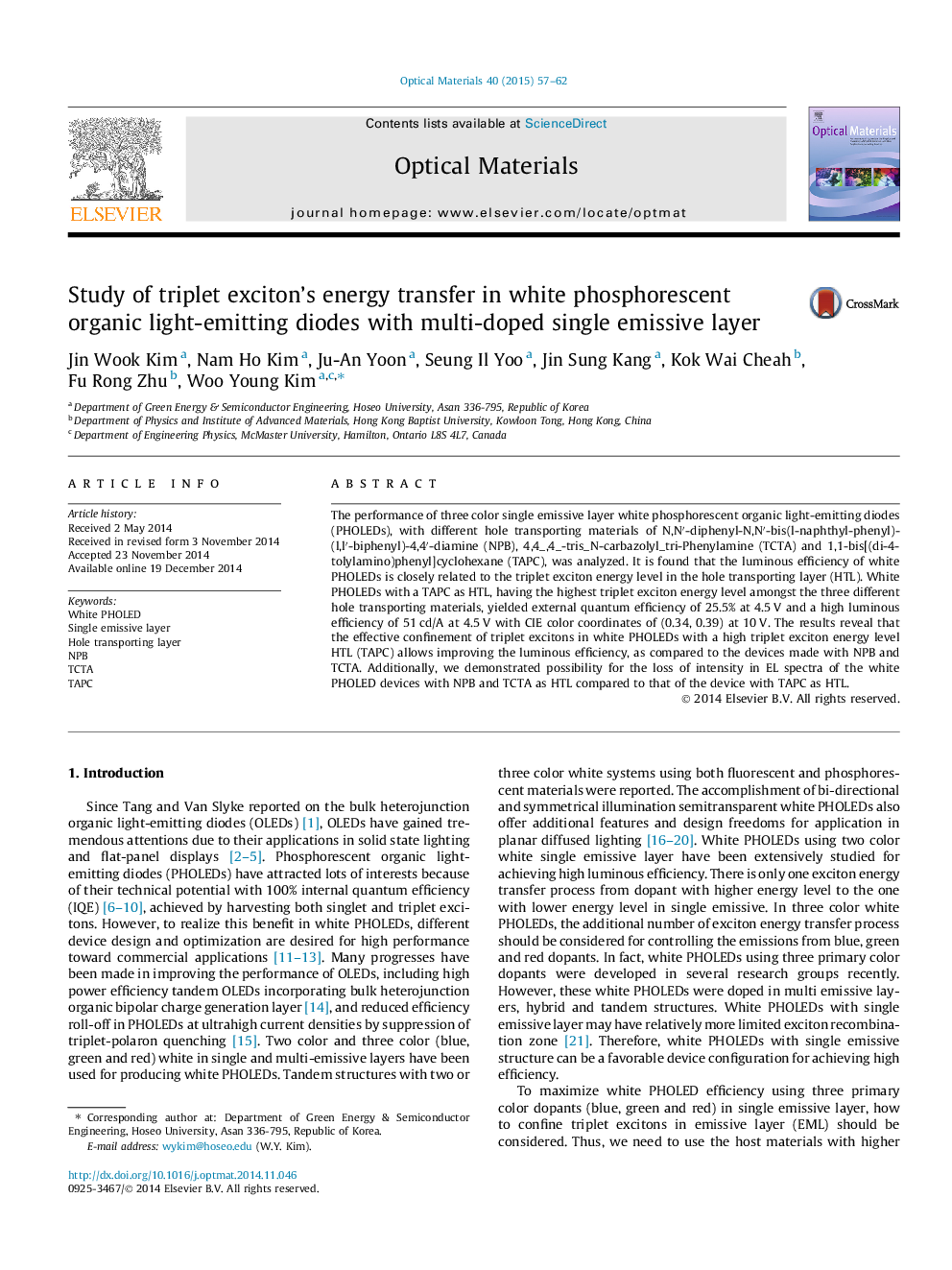| Article ID | Journal | Published Year | Pages | File Type |
|---|---|---|---|---|
| 1493868 | Optical Materials | 2015 | 6 Pages |
•Triplet exciton energy in HTL affects confinement of triplet exciton in emissive layer.•HTL materials with higher triplet energy level are favorable for efficient operation.•HTL material should be considered to both hole injection and high triplet energy level.
The performance of three color single emissive layer white phosphorescent organic light-emitting diodes (PHOLEDs), with different hole transporting materials of N,N′-diphenyl-N,N′-bis(l-naphthyl-phenyl)-(l,l′-biphenyl)-4,4′-diamine (NPB), 4,4_,4_-tris_N-carbazolyl_tri-Phenylamine (TCTA) and 1,1-bis[(di-4-tolylamino)phenyl]cyclohexane (TAPC), was analyzed. It is found that the luminous efficiency of white PHOLEDs is closely related to the triplet exciton energy level in the hole transporting layer (HTL). White PHOLEDs with a TAPC as HTL, having the highest triplet exciton energy level amongst the three different hole transporting materials, yielded external quantum efficiency of 25.5% at 4.5 V and a high luminous efficiency of 51 cd/A at 4.5 V with CIE color coordinates of (0.34, 0.39) at 10 V. The results reveal that the effective confinement of triplet excitons in white PHOLEDs with a high triplet exciton energy level HTL (TAPC) allows improving the luminous efficiency, as compared to the devices made with NPB and TCTA. Additionally, we demonstrated possibility for the loss of intensity in EL spectra of the white PHOLED devices with NPB and TCTA as HTL compared to that of the device with TAPC as HTL.
